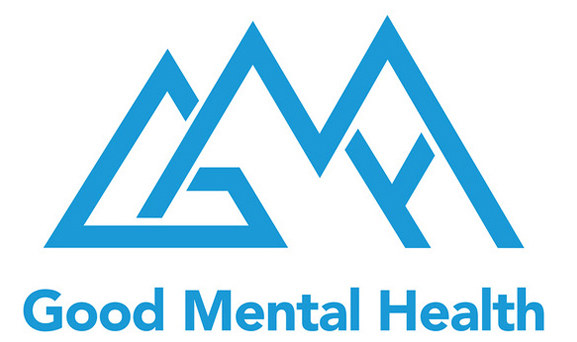There is a common consensus among the mental health community. We all want to end the stigma attached to mental disorders.
But before we can end the stigma, let’s spend a moment attempting to understand what it is we are trying to end.
“Stigma is a mark of disgrace that sets a person apart. When a person is labeled by their illness they are seen as part of a stereotyped group. Negative attitudes create prejudice which leads to negative actions and discrimination.” [1]
So, if a stigma is a mark of disgrace applied to a stereotyped group, let’s take another moment to describe the common myths surrounding mental illness which feed into that stereotype:
- People with a mental illness are “psycho,” “mad,” and “dangerous” and should be locked away.
- People with schizophrenia are violent.
- Mental illness is caused by bad parenting.
- Depression is a character flaw and those afflicted should be able to “snap out of it.”
- Addiction is a lifestyle choice and results from a lack of willpower.
- Mental illness is rare.
- People with mental illness never get better. [2]
An estimated 18.5% of the U.S. population experiences mental illness in a given year. This translates to approximately 43.8 million people who would be saying: I should be locked away, I may be violent, I had a horrible childhood, I lack will power and self-control, I’m in a damaged minority, I’ll never get better. [3]
Can 43.8 million people (in one country alone) really expect to suffer such a bleak future?
Of course not. Which is why these perpetual negative beliefs are MYTHS.
So, how does the stigma remain? And what can we do to end it once and for all?
Stigma is Perpetuated from the Top Down
I am going to make a bold statement here but I believe it needs to be said: the stigma attached to mental illness is perpetuated from the top down.
Hold on, let me explain.
Mental health practitioners arrive in the field of mental health largely because someone they are close to has suffered, or is currently suffering, from mental health issues. As a result, these professionals embark on a quest for knowledge in order to make meaning of the difficult situation they have endured themselves. They absorb knowledge, training, and expertise which leads to degrees, diplomas, professional certifications, and ultimately careers.
It is by learning to heal ourselves that we can teach others how to heal.
Whether it is with conscious or subconscious awareness, every therapist, counselor, psychologist, and psychiatrist has been led to where they are because they have traveled a similar path. (It is the particularly good ones who consciously recognize the path they are on and their reasons for being there.)
However, during the course of professional training, these same mental health professionals are taught not to disclose their personal experiences to their clients. To do so is a breach of etiquette, therapeutic boundaries, and sometimes ethics.
The problem with this non-disclosure culture is that it runs contrary to healing, not only for the clients but for the professionals also. Whether you are a healer or a person who seeks healing, we are all human beings first. Therefore, the universal truth applies to all: we are only as sick as our secrets. Whatever we choose to deny about ourselves, refuse to acknowledge or fully integrate, remains with us as an impediment to our fullest expression in this life. It is a lack of transparency, and the shame it implies, that keeps us stuck.
If authenticity is the key to healing, then the way to practice authenticity is by owning our own story. This is the very thing that “professional boundaries” do not allow.
This separation between practitioner and client is the basis for the dichotomy that feeds the stigma: one is “sick” while the other is “well,” one is a healer while the other needs to be healed, one is enlightened and one is unenlightened, one is “mentally ill” and the other is not…when in fact, we are ALL travelers on the same path.
Some are just farther down the path than others and the secret of it all is: a diploma does not necessarily indicate who is farther than another!
But it is this separation between heal-er and heal-ee that perpetuates the myths, thus feeding the stigma.
Trauma-informed Practice
There is a practice methodology within the human services community called trauma-informed practice.
Trauma-informed practice isn’t a treatment protocol. It is a paradigm shift which moves from asking the question, “What is wrong with you?” to “What happened to you?”
For example: A practitioner meets a client for an evaluation. The client is experiencing depression. In order to treat the client, the practitioner may ask, “What is wrong with this client?” and the answer may very well be “depression,” which would then lead the practitioner to follow his or her treatment protocol for clients experiencing depression.
However, a practitioner who has adopted a trauma-informed practice might see the same client and ask, “What has happened to this client which has led to his/her current situation?” This new approach would allow the client and practitioner to uncover the underlying trauma which is the source of the client’s depression. The answer to the new question might be, “this client has suffered a significant loss and needs help expressing his/her grief. This unresolved trauma has led to depression.”
Both practitioners recognize that their client is depressed. It’s how they go about finding the root cause of the depression that is different.
Why is this important?
Just as our bodies physically manifest our emotional states, our minds do the same. Mental illness, in all it’s myriad forms, is a symptom of the emotions we carry around related to unresolved past trauma. Just as a wound stops bleeding as it heals, mental health symptoms can lessen or resolve as the originating trauma begins to heal.
Although we may feel depressed, which is a very real feeling, what we are actually experiencing is the accumulation of unexpressed emotion that has built up to the point that it has changed the physical body, including the biochemistry of the brain. Instead of looking at mental illness as a diagnosis, what if we looked at it as a description of our emotional state instead?
For instance, instead of looking at ourselves as victims of biology with, “depression,” or “anxiety,” or “bipolar disprder,” what if we looked at ourselves as trauma survivors dealing with the physical symptoms brought about by our exposure to the originating traumatic event?
This change in conceptualization would turn those MYTHS upside down.
Instead of “psycho,” “mad,” and “dangerous,” a more appropriate description would be resilient, courageous, and surviving by diligently engaging in our own healing with the full anticipation that, through the process of healing, our symptoms will lessen or resolve.
The stigma attached to mental disorders would no longer exist in the context it does today because the mental health community, including the professionals who also travel the mental health path, would no longer be untouchable experts. Instead, they too could become the fully integrated owners of their own survival stories, willing and able to share the insight, encouragement, and lessons they learned along the way in addition to their vast academic knowledge.
If you’re interesting in learning more about physical symptoms and their root emotional causes, read my previous article titled The Root Cause of Depression is Anger and check out this book –> The Body Never Lies, by Alice Miller.
4 Ways to End the Stigma Attached to Mental Illness
To end the stigma, or otherwise the shame, associated with experiencing a mental disorder, consider these four points:
- All human beings have experienced trauma. “Trauma” is a broad term which describes any situation or circumstance in which the person affected felt an overwhelming loss of control, safety, or ability to cope with the stress of the event at the time. This means that we cannot rationalize our past trauma through our current world view. Just because we may view a past traumatic situation as “not a big deal” today, this does not mean it wasn’t a HUGE deal at the time. Rationalizing, intellectualizing, or diminishing a traumatic experience does not heal the unresolved trauma. All it does is postpone the inevitable healing that must take place.
- Denial of unresolved trauma allows symptoms to grow worse and worse. A person is NOT their mental illness. Instead, a person is a physical manifestation of their predominant emotional state. Once we accept that we are trauma survivor in need of healing versus victims of an out-of-control disease, we can become proactive in our own healing process. The longer we remain in denial, the longer the underlying emotions stay unresolved, the more severe the symptoms manifest.
- Those who are experiencing a mental disorder must start viewing the disorder as the collection of symptoms indicative of the unresolved, underlying trauma. A diagnosis is a description, not a life sentence. If the client is willing to confront and heal the root emotional cause of their distress, symptoms can lessen and resolve over time. Working with a practitioner who subscribes to trauma-informed care is a necessity.
- The professional mental health community would serve clients better by adopting an attitude of authenticity and transparency. The reason mental health providers find them selves in their chosen profession is largely due to their own quest for knowledge and answers. For the same reason that many addiction specialists were once addicts themselves, mental health providers have a deep understanding and empathy for the population they serve. Integrating and owning these personal truths would disrupt the stereotypes, and therefore the stigma, that this separation perpetuates.
As always, if you found this information helpful, please share it. And if you feel you are in the exact right place and would like access to more resources and guidance, read more about the Good Mental Health team and join us on Facebook.
References:
1.http://www.mentalhealth.wa.gov.au/mental_illness_and_health/mh_stigma.aspx
2. http://www.mendthemind.ca/stigma/top-11-myths-about-mental-illness
3. https://www.nami.org/Learn-More/Mental-Health-By-the-Numbers



 Hi, I'm Diana Brummer a psychotherapist, writer, and coach in St. Johns, Florida. I love helping people thrive in their relationships and their lives. My hope is that you find the information in these articles educational and useful. Thank you for stopping by!
Hi, I'm Diana Brummer a psychotherapist, writer, and coach in St. Johns, Florida. I love helping people thrive in their relationships and their lives. My hope is that you find the information in these articles educational and useful. Thank you for stopping by! 
